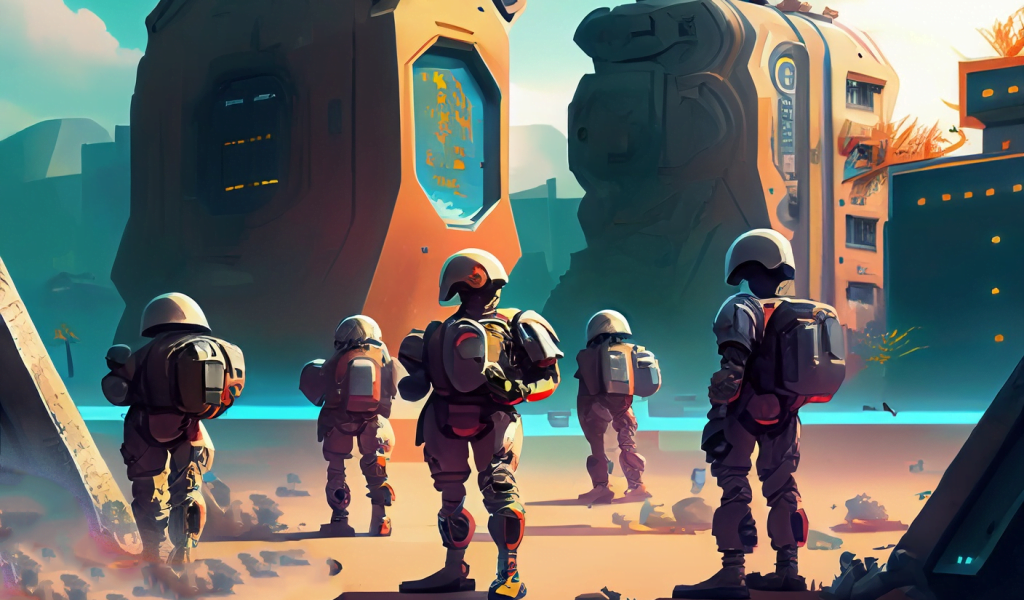The world of gaming is undergoing a seismic shift, and Web3 gaming is at the forefront of this revolution. Blockchain tech has paved the way for decentralized, player-centric experiences, offering unique opportunities for gamers and developers. With that, let’s look at the trends that each blockchain game developer should know to stay ahead in this ever-growing industry.
Play-and-Earn/Play-and-Own
While blockchain titles such as Axie Infinity were initially successful owing to the play-to-earn (P2E) model, this concept has been harshly criticized due to its inability to retain players and its emphasis on profits above enjoyment. Since 2021, the “play-to-x” paradigm has evolved slightly, with many Web3 games now focusing on “Play-and-Earn/Own,” with game tokens and NFTs widely regarded as byproducts of the gameplay instead of revenue sources.
While P2E models focus on players earning crypto or assets through gameplay, play-and-earn emphasizes the ownership and tradeability of in-game assets and NFTs. This shift reflects a growing realization among players that digital ownership, collectibles, and the opportunity to trade in-game items are as important as direct monetary benefits. The play-and-own approach, on the other hand, offers players a deeper sense of attachment to their in-game possessions, fostering a more robust virtual economy.
With that, developers should consider implementing play-and-earn/play-and-own mechanics to tap into this growing trend. By designing games that reward skill, time, and effort, developers can create sustainable ecosystems that benefit both players and themselves.
Cross-Platform Integration
Cross-platform integration is another crucial trend for NFT game developers. Players want to seamlessly transition between platforms, including PC, console, and mobile, while maintaining their progress and in-game assets. Blockchain tech can facilitate this by allowing players to store their assets on the blockchain and access them from any device.
To stay competitive, developers should focus on creating games with cross-platform compatibility, allowing players to enjoy a consistent gaming experience across various devices. Galaxy Fight Club, for example, is a cross-IP blockchain game available on PC and mobile. Holders of different NFT collections, like CyberKongz, Illuvium, and Karafuru, can battle against each other to win NFTs and token rewards.
Interoperable NFTs
Non-fungible tokens (NFTs) are at the heart of Web3 gaming. These unique digital assets can represent in-game items, characters, land, and more. The trend towards interoperable NFTs means players can use their assets across multiple games, increasing their value and utility. For instance, the Otherside metaverse by Yuga Labs aims to develop a truly interoperable metaverse – one that allows you to play as any NFT character you desire.
For blockchain game developers, creating NFTs that are interoperable with other games can attract a broader player base and enhance the longevity of their projects. Building on standardized blockchain protocols like Ethereum’s ERC-1155 can facilitate interoperability.
Blockchain Scalability Solutions
Blockchain tech has made great strides in recent years, but scalability remains a challenge. High gas fees and slow transaction times can hinder the growth of Web3 gaming. However, there are emerging scalability solutions like Layer 2s (e.g., Polygon, Immutable zkEVM) and sidechains that can help alleviate these issues.
Developers should keep an eye on these solutions and consider integrating them into their games to provide a more seamless and cost-effective experience for players.
Community-Driven Development
Community-driven development has become a cornerstone of Web3 gaming. Players want to have a say in the direction of the games they love and invest in. Developers who actively engage with their communities through forums, social media, and governance tokens can build loyal player bases and benefit from valuable feedback and ideas.
Empowering players to participate in decision-making processes, such as game updates or content creation, not only strengthens the community but also fosters a sense of ownership that can drive the success of a Web3 game.
Metaverse Exploration
The concept of a metaverse, a virtual universe where players can interact, socialize, and engage in various activities, is becoming increasingly popular in Web3 gaming. Building interconnected digital worlds can offer players a richer and more immersive experience. For instance, Decentraland and The Sandbox are two metaverse games that empower players to build, create, sell, and purchase digital assets, as well as virtual experiences for Web3 gaming.
Developers who invest in crafting metaverse-like worlds within their games can tap into this trend, fostering a sense of community and providing endless opportunities for player interaction.
Final thoughts
Web3 gaming is evolving rapidly, presenting both challenges and exciting opportunities for blockchain game developers. Staying informed about these trends and adapting to the changing landscape is crucial for success in this dynamic industry. By embracing play-and-earn/own models, enabling cross-platform integration, fostering interoperability, addressing scalability issues, engaging the community, and exploring metaverse gameplay, developers can create innovative and sustainable Web3 games that captivate players and stand the test of time in this exciting era of blockchain gaming.

 Bitcoin
Bitcoin  Ethereum
Ethereum  Tether
Tether  Solana
Solana  XRP
XRP  USDC
USDC  Lido Staked Ether
Lido Staked Ether  Cardano
Cardano  Avalanche
Avalanche 

